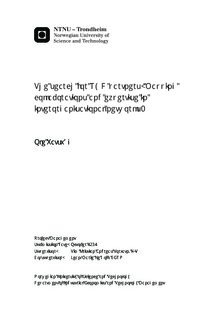| dc.description.abstract | Companies, academic institutions and not-for-profit organisations in the High Energy Physics community have recently expressed a need for a service or tool that can simplify and improve the partner selection process in research and development (R&D) -collaborations. Today, partner selection is carried through differently, from organisation to organisation. It is often an informal process, heavily influenced by managements? personal networks. The literature, however, suggests a more rational and systematic two-step approach called searching and screening. This document proposes a conceptual framework for partner selection in R&D-collaborations, as a solution to this challenge. The framework is based on prior literature, and empirical findings from CERN.The most important organisational characteristics in any R&D-collaboration are capability and knowledge concerning the technological challenges of the collaboration. The success of the collaboration is dependent on these characteristics, and so are the prospects for knowledge transfer among the participating organisations. Thus the ideal partner for R&D-collaboration should be the most capable or knowledgeable organisation that is either applying or developing the technologies most relevant to the collaboration?s central challenges. In addition, the organisation should preferably hold beneficial contacts throughout its organisational network, which the collaboration can draw benefits from.Prior studies have suggested that capability and knowledge can be measured by the means of bibliometric documents, such as publications and patents. These documents contain details on their affiliated organisations. That information can be used to create graphical representations of interorganisational networks; so called sociograms. A set of sociograms based on publications and patents in a given technological field, can reveal the most capable and knowledgeable organisations in that field.Five technologies related to Position-Sensitive Solid-State particle detectors are reviewed in this study. Sociograms of the organisations developing and using each of the technologies have been created, by the means of an IT tool. The IT tool constitutes the core functions of the conceptual framework. Several technical experts affiliated with CERN have evaluated the pertinence of the sociograms, and provided feedback on the methods of the framework and its corresponding IT tool.Interorganisational R&D-collaboration is a significant driver for technological innovation. Many revolutionary discoveries in medical science, power production and computer technology have been developed and commercialised as a result of collaborative arrangements. It is therefore in the interest of humanity to promote and create incentives for this kind of cooperation. | nb_NO |

